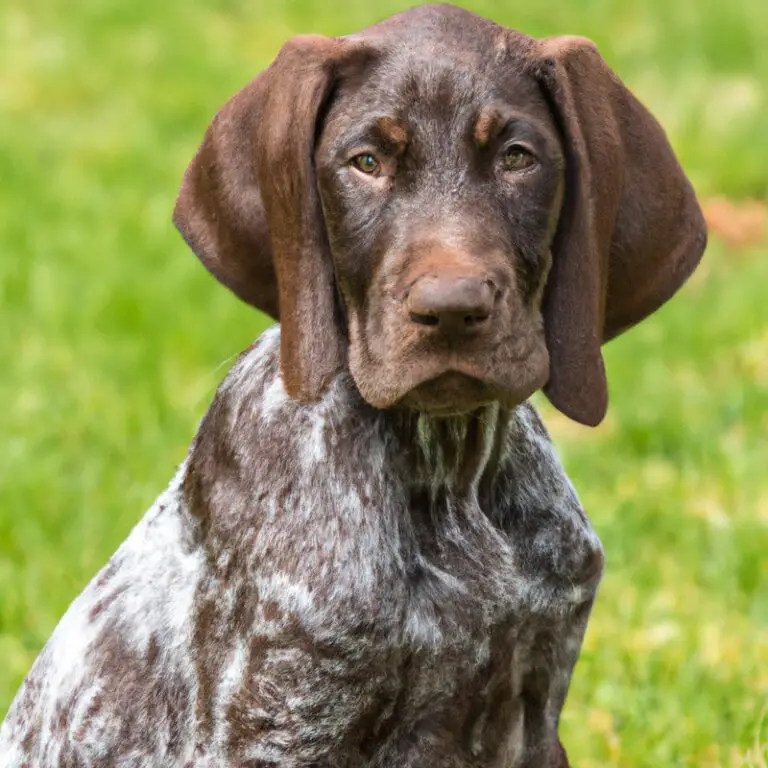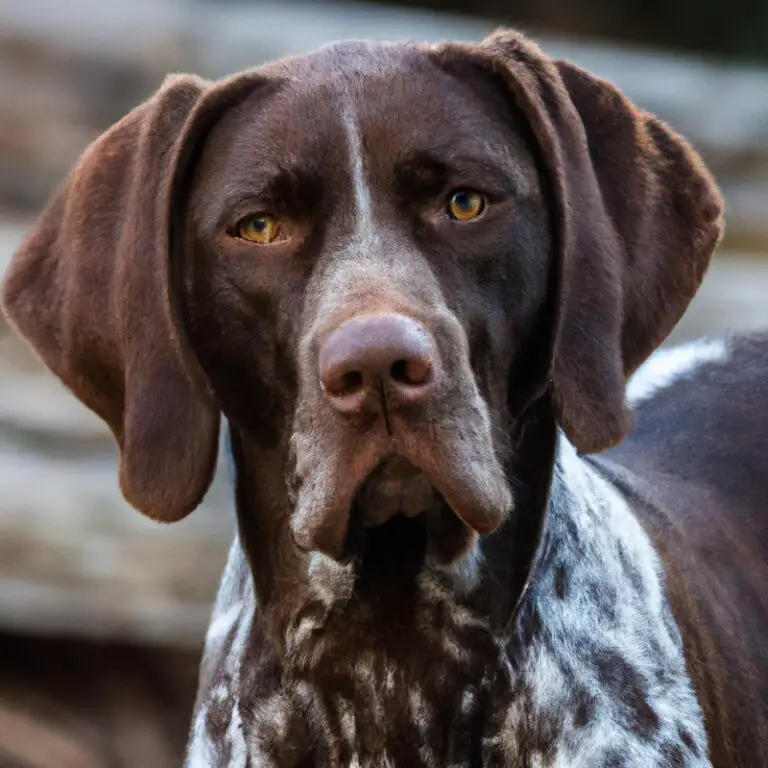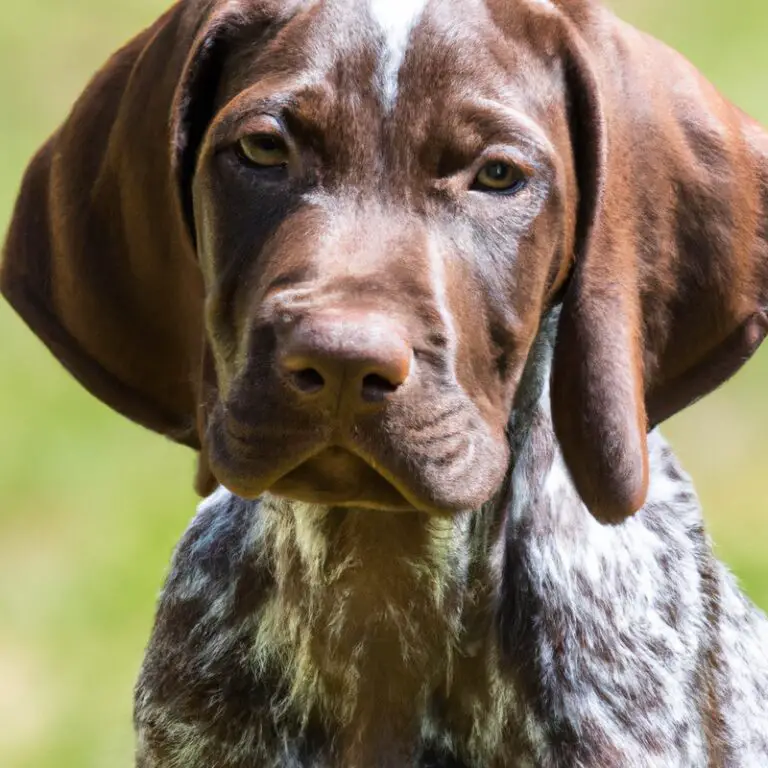How Often Should I Exercise My German Shorthaired Pointer?
Key Takeaways:
- Regular exercise is essential for a German Shorthaired Pointer’s physical and mental well-being.
- Aim for at least one hour of exercise per day to keep your German Shorthaired Pointer happy and healthy.
- Vary your exercise routine to include both physical and mental stimulation for your German Shorthaired Pointer.
- Consult with a veterinarian or professional dog trainer to determine the ideal exercise plan for your German Shorthaired Pointer’s specific needs.
Are you the proud owner of a German Shorthaired Pointer? If so, you know firsthand how these energetic and playful dogs can bring immense joy to your life.
But with that boundless energy comes the important task of providing them with enough exercise to keep them happy and healthy.
How often should you exercise your German Shorthaired Pointer? That’s the question we’re here to answer.
As an expert in canine care, I’ll guide you through the factors to consider, exercise guidelines, and even provide some fun exercise ideas to keep your furry friend active and thriving.
So let’s dive in!
| Frequency | Exercise Recommendation |
| Every day | – Long walks – Medium to high intensity exercise sessions |
| 3-4 times a week | – Moderate exercise sessions – Shorter walks on non-exercise days |
| 2 times a week | – Shorter exercise sessions – Longer walks on non-exercise days |
| Once a week or less | – Short walks – Playtime in the backyard |
Importance of Exercise for German Shorthaired Pointers
Understanding the Energy Level of German Shorthaired Pointers
German Shorthaired Pointers are known for their high energy levels and need for regular exercise. They are an active and athletic breed that requires daily physical activity to maintain their overall health and happiness.
Understanding their energy level is crucial for ensuring their well-being.
German Shorthaired Pointers have a high energy level and enjoy engaging in various activities. They have a strong hunting instinct and love to run, play, and explore.
Regular exercise helps them channel their energy in a positive way and prevents them from becoming bored or destructive.
A German Shorthaired Pointer typically requires at least 1-2 hours of exercise each day. This can include activities such as long walks, jogging, hiking, playing fetch, or participating in dog sports like agility or obedience training.
Mental stimulation is also important, so incorporating games and puzzles into their exercise routine is beneficial.
It is important to note that the energy level of each individual German Shorthaired Pointer can vary. Factors such as age, health, and temperament play a role in determining their exercise needs.
Consult with your veterinarian or a professional dog trainer to determine the appropriate exercise routine for your specific German Shorthaired Pointer.
Regular exercise not only helps keep German Shorthaired Pointers physically fit, but it also contributes to their mental well-being. It helps reduce behavioral problems and promotes a healthy bond between the dog and the owner.
By providing regular exercise, you are ensuring that your German Shorthaired Pointer remains happy, healthy, and well-adjusted.
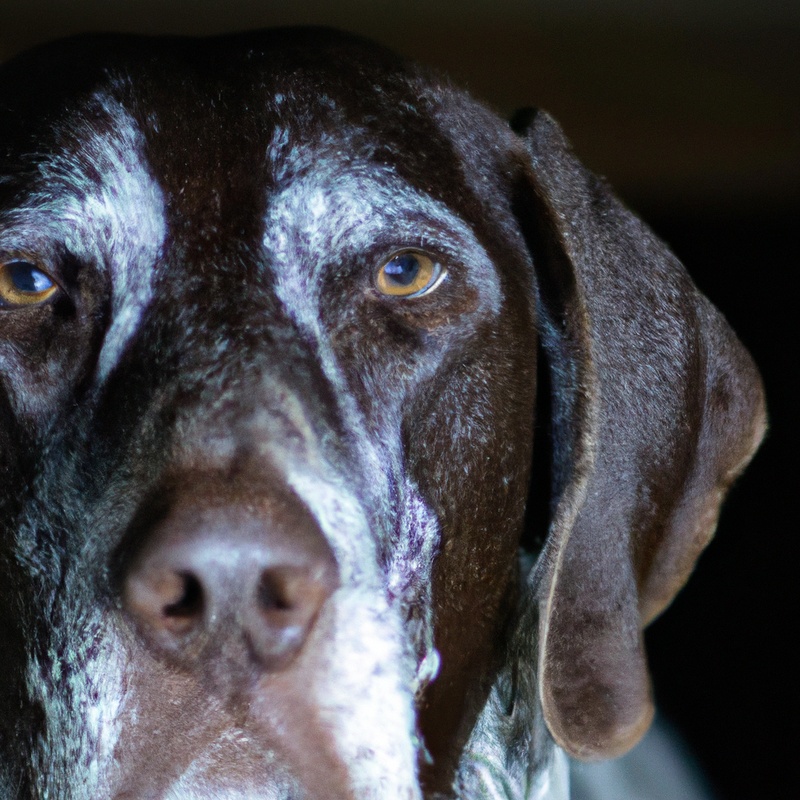
Physical Health Benefits of Exercise for German Shorthaired Pointers
Physical Health Benefits of Exercise for German Shorthaired Pointers:
- Helps maintain a healthy weight by burning calories and preventing obesity.
- Strengthens muscles and improves overall strength, agility, and endurance.
- Promotes cardiovascular health by improving heart and lung function.
- Enhances joint flexibility and reduces the risk of joint and bone-related problems.
- Boosts the immune system, keeping your German Shorthaired Pointer healthier.
- Improves digestion and lowers the chances of digestive issues.
- Reduces the risk of chronic diseases, such as diabetes and certain types of cancer.
- Promotes better mental health and reduces anxiety and behavioral problems.
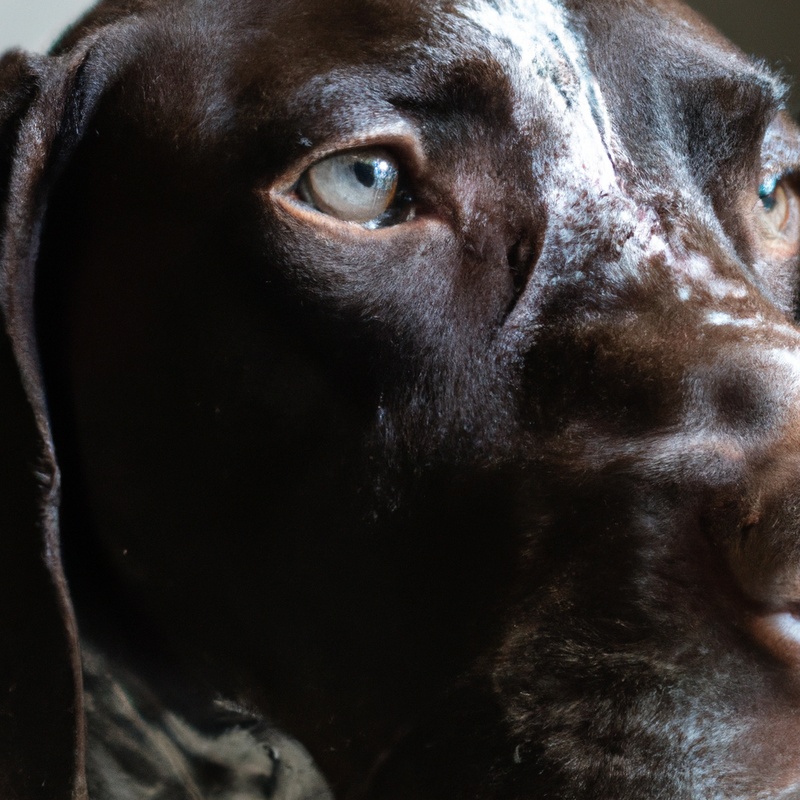
Mental Stimulation and Behavior Benefits of Exercise
Mental stimulation and behavior benefits of exercise are crucial for German Shorthaired Pointers. Regular exercise keeps their minds engaged, preventing boredom and destructive behavior.
It helps release pent-up energy, reducing anxiety and hyperactivity.
Exercise also promotes better sleep and overall relaxation. Mental stimulation activities like puzzle toys, obedience training, and interactive games further challenge their intellect and meet their need for mental stimulation.
Incorporating both physical exercise and mental stimulation in your German Shorthaired Pointer’s routine will ensure a well-rounded and balanced lifestyle.
Factors to Consider When Determining Exercise Frequency
Age of the German Shorthaired Pointer
Age of the German Shorthaired Pointer The age of your German Shorthaired Pointer is an important factor to consider when determining exercise frequency. Puppies have a lot of energy and need frequent exercise to burn it off.
As they grow older, their exercise needs may decrease slightly but they still require regular physical activity.
Adult German Shorthaired Pointers thrive on a combination of daily walks, playtime, and mental stimulation. Senior German Shorthaired Pointers may have less stamina and may benefit from shorter, gentler exercise sessions.
Adjusting exercise routines based on your dog’s age will help ensure they remain healthy and happy.
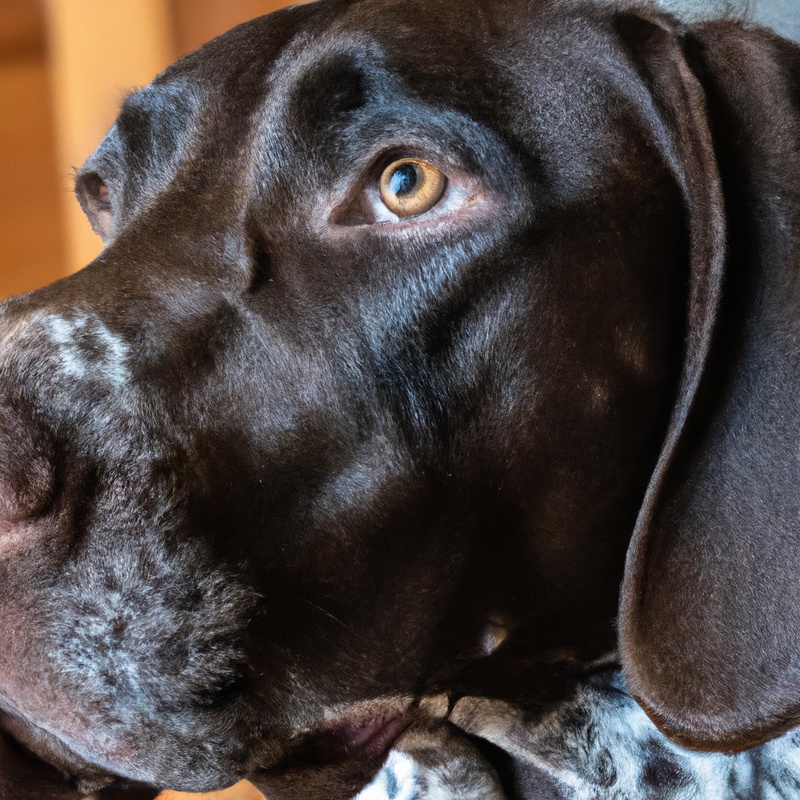
Overall Health and Fitness Level
Overall Health and Fitness Level: When it comes to determining how often you should exercise your German Shorthaired Pointer, it is important to consider their overall health and fitness level. Just like humans, dogs have different exercise needs based on factors such as age, weight, and overall health.
If your German Shorthaired Pointer is in good health and has a high fitness level, they may require more frequent exercise to meet their energy requirements and maintain a healthy weight.
On the other hand, if your dog is older, overweight, or has health issues, they may need less intense exercise and shorter sessions. It is crucial to consult with your veterinarian to assess your dog’s health and fitness level before starting any exercise routine.
They can provide specific recommendations based on your dog’s individual needs and help create a suitable exercise plan that promotes overall health and wellbeing.
Regular exercise not only helps to keep your German Shorthaired Pointer physically fit but also provides mental stimulation and helps prevent behavioral problems. So, make sure to find a balance that suits your dog’s specific needs and always monitor their response to exercise to ensure they are not being overexerted.
Individual Activity Preferences and Enthusiasm
When it comes to determining exercise frequency for your German Shorthaired Pointer, it’s important to consider their individual activity preferences and enthusiasm. Every dog is unique, and their exercise needs can vary based on their energy levels and interests.
Some pointers may have a high prey drive and enjoy activities like fetching or agility training, while others may prefer long walks or hiking.
Pay attention to what activities your dog shows enthusiasm for and incorporate those into their exercise routine. By tailoring their exercise to their preferences, you can ensure that they stay engaged and enjoy their workouts.
Diet and Nutrition
Diet and Nutrition are key factors in keeping your German Shorthaired Pointer healthy. Here are some important points to keep in mind:
- Balancing Nutrients: Your dog’s diet should be well-balanced and include essential nutrients like proteins, carbohydrates, fats, vitamins, and minerals. Consult your veterinarian to determine the right balance for your dog’s specific needs.
- Quality Food: Choose high-quality dog food that is appropriate for your German Shorthaired Pointer’s age, size, and activity level. Look for brands that use real meat as the main ingredient and avoid fillers or artificial additives.
- Portion Control: Overfeeding can lead to weight gain and health issues. Follow the feeding guidelines provided on the dog food packaging and adjust portion sizes based on your dog’s activity level and body condition.
- Hydration: Provide fresh and clean water at all times to keep your dog hydrated. This is particularly important during hot weather or after exercise.
- Avoid Toxic Foods: Certain foods like chocolate, grapes, onions, garlic, and caffeine can be toxic to dogs. Ensure they are kept out of reach and never feed your German Shorthaired Pointer such foods.
- Regular Feeding Schedule: Establish a consistent feeding schedule and avoid free-feeding, where food is left out all day. This helps maintain a healthy metabolism and prevents overeating.
Remember, every dog is unique, so it’s important to consult with your veterinarian for personalized diet and nutrition recommendations for your German Shorthaired Pointer.
Guidelines for Exercise Frequency for German Shorthaired Pointers
Daily Exercise Requirements for German Shorthaired Pointers
Daily Exercise Requirements for German Shorthaired Pointers
- German Shorthaired Pointers have high energy levels and require daily exercise to stay happy and healthy.
- Aim for at least 1 to 2 hours of exercise each day for your German Shorthaired Pointer.
- Mix up the activities to keep them mentally and physically stimulated. This can include walks, runs, playtime in a secure yard, and interactive games.
- Engage in activities that allow your dog to use their natural instincts, such as swimming, retrieving, or participating in dog sports like agility or obedience training.
- Remember to gradually build up stamina, especially for young puppies or older dogs who may be out of shape.
- Consider factors like weather conditions and your dog’s individual needs when determining the duration and intensity of exercise.
- Regular exercise will help prevent boredom, weight gain, and destructive behavior in German Shorthaired Pointers.
- Consult with your veterinarian to determine the ideal exercise routine based on your specific dog’s age, health, and activity level.
Exercise Duration and Intensity Recommendations
Exercise Duration and Intensity Recommendations:
- Duration: German Shorthaired Pointers should engage in at least 60 minutes of exercise per day. This can be split into multiple sessions to prevent exhaustion.
- Intensity: They are highly energetic, so they benefit from vigorous exercise. Activities like running, playing fetch, or participating in dog sports can help meet their exercise needs.
- Age considerations: Puppies should have shorter exercise durations to avoid putting too much strain on their developing bodies. Be sure to consult your veterinarian for specific recommendations based on your dog’s age and health.
- Mental stimulation: In addition to physical exercise, mental stimulation is important for German Shorthaired Pointers. Incorporating puzzle toys, obedience training, or interactive games can keep their minds engaged.
- Weather conditions: Be mindful of extreme weather conditions. In hot weather, exercise during cooler parts of the day and provide plenty of water. In cold weather, protect your dog from frostbite and limit outdoor time if necessary.
Remember, every dog is unique, so it’s essential to monitor your German Shorthaired Pointer’s individual response to exercise and adjust accordingly. Regular exercise not only keeps them physically fit but also enhances their overall well-being.
Different Types of Exercise to Incorporate
Different Types of Exercise to Incorporate:
- Daily Walks: Regular walks are a great way to provide exercise and mental stimulation for your German Shorthaired Pointer. Aim for at least 30 minutes to an hour of walking each day.
- Running or Jogging: GSPs are known for their athleticism, so incorporating running or jogging into their exercise routine can help burn off their energy. Start slowly and gradually increase the distance and intensity as your dog builds stamina.
- Play Fetch: GSPs love to fetch! Playing fetch not only gives them a physical workout but also engages their natural hunting instincts. Use a ball or a frisbee and make sure to provide plenty of space for them to run.
- Swimming: If you have access to a safe swimming area, allow your GSP to swim. This low-impact exercise is excellent for their joints and muscles and provides a full-body workout.
- Agility Training: GSPs are highly intelligent and thrive on mental challenges. Consider incorporating activities like agility training, which involves navigating obstacles, as it provides a combination of physical exercise and mental stimulation.
Remember to consult with a veterinarian before starting any new exercise routine. Each GSP is unique, and their exercise needs may vary based on age, health, and individual preferences.
Exercise Ideas for Your German Shorthaired Pointer
Daily Walks and Hiking
Daily Walks and Hiking: German Shorthaired Pointers are an active breed and need regular exercise to keep them happy and healthy. Daily walks are a great way to fulfill their exercise needs.
Aim for at least 30 to 60 minutes of walking each day.
You can also mix it up by taking them on hikes, which provide mental stimulation and a more challenging workout. Make sure to bring water and snacks for both you and your dog during hikes.
Remember to gradually increase the intensity and duration of your walks and hikes to avoid straining your dog’s muscles.
Off-Leash Playtime and Fetch
Off-Leash Playtime and Fetch: Off-leash playtime is highly recommended for German Shorthaired Pointers, as they are energetic and athletic dogs. It allows them to release their energy and stimulate their minds.
Here are some benefits of off-leash playtime for your German Shorthaired Pointer:
- Provides mental stimulation and helps prevent boredom.
- Promotes socialization with other dogs and humans.
- Improves your dog’s recall and obedience skills.
- Allows them to freely roam and explore their environment.
You can also engage your German Shorthaired Pointer in a game of fetch during off-leash playtime. This game is great for exercising their muscles and fulfilling their natural retrieving instincts.
It’s important to use a suitable ball or toy and choose a safe, enclosed area for the game.
Remember to always supervise your dog during off-leash playtime and make sure they are in a secure and controlled environment.
Agility Training and Obstacle Courses
Agility training and obstacle courses are excellent ways to keep your German Shorthaired Pointer active and engaged. These activities help improve their coordination, focus, and physical fitness.
Set up a course in your backyard with hurdles, tunnels, and weaving poles.
Start with basic exercises and gradually increase the difficulty level. Incorporate verbal commands and hand signals to guide your dog through the course.
Make sure to use positive reinforcement and rewards to motivate your dog.
Agility training can be a fun and challenging way to bond with your German Shorthaired Pointer while keeping them mentally and physically stimulated.
Swimming and Water Activities
Swimming and water activities are excellent exercises for German Shorthaired Pointers. They are natural swimmers and have a strong affinity for water.
These activities provide a full-body workout and are low-impact, making them ideal for dogs with joint issues.
Swimming helps to build muscle strength, improve cardiovascular health, and burn off excess energy. It also helps to keep their coat clean and free from dirt and debris.
If you have access to a pool, lake, or beach, take your German Shorthaired Pointer for a swim regularly.
Just make sure to supervise them and use safety precautions to ensure a safe and enjoyable experience.
Mental Stimulation and Puzzle Games
Mental stimulation is just as important for your German Shorthaired Pointer as physical exercise. Puzzle games can provide a great way to engage their mind and keep them entertained.
Consider introducing interactive toys or treat puzzles that require problem-solving skills.
Additionally, activities like scent work, obedience training, and agility courses can challenge their cognitive abilities. Remember, a mentally fulfilled dog is a happy and well-behaved companion.
Signs of Overexercising or Underexercising
Identifying Physical Exhaustion or Injury
Identifying Physical Exhaustion or Injury: When it comes to exercise, it’s important to keep a close eye on your German Shorthaired Pointer for any signs of physical exhaustion or injury. Here are some key indicators to look out for:
- Limping or favoring a particular leg: If your dog is limping or consistently putting more weight on one leg, it could be a sign of a sprain, strain, or even a more serious injury.
- Excessive panting and difficulty breathing: While it’s normal for dogs to pant during exercise, if your German Shorthaired Pointer is excessively panting, struggling to catch their breath, or unable to cool down after a reasonable rest period, it could indicate exhaustion or a heat-related issue.
- Decreased or lack of appetite: If your dog suddenly loses interest in eating, it could be a sign of physical fatigue or injury.
- Reluctance to move or play: If your dog is usually active and playful but suddenly seems hesitant or unwilling to participate in physical activities, it may be a sign of exhaustion, pain, or injury.
- Vocalization or signs of pain: Watch for your dog making unusual noises like whimpering, yelping, or growling during exercise or movement. These can be indications of pain or discomfort.
Remember, it’s essential to consult with a veterinarian if you notice any of these signs. They can provide a professional assessment and recommend the appropriate course of action to help your German Shorthaired Pointer recover and stay healthy.
Behavioral Changes and Restlessness
Behavioral Changes and Restlessness are common indicators of a German Shorthaired Pointer that is not getting enough exercise. If your dog is exhibiting destructive behavior, excessive barking, or restlessness, it may be a sign that they need more physical activity.
These dogs are active and energetic by nature, so they require regular exercise to channel their energy in a positive way.
Providing them with outlets for exercise, such as daily walks, runs, or playtime in the yard, can help alleviate these behavioral changes and keep them happy and healthy. Remember, a tired dog is a well-behaved dog!
Obesity and Lack of Muscle Tone
Obesity is a concern for German Shorthaired Pointers, as it can lead to various health issues. Lack of muscle tone is often associated with obesity, as the excess weight puts strain on their joints.
To avoid these problems, it’s important to ensure that your German Shorthaired Pointer maintains a healthy weight.
Regular exercise is crucial in achieving and maintaining an ideal body condition for your dog. This helps to burn calories, strengthen muscles, and improve overall fitness.
By providing regular exercise and a balanced diet, you can help prevent obesity and promote muscle tone in your German Shorthaired Pointer.
Tailoring Exercise Routine to Individual Needs
Consulting with a Veterinarian or Canine Trainer
Consulting with a veterinarian or canine trainer is crucial when it comes to tailoring an exercise routine for your German Shorthaired Pointer. They have the knowledge and experience to assess your dog’s specific needs and provide you with expert guidance.
A veterinarian can examine your dog’s overall health and determine any exercise restrictions or modifications needed.
A canine trainer can help you design an exercise plan that suits your dog’s breed, age, and energy level. Their professional advice will ensure that your German Shorthaired Pointer stays healthy, fit, and happy.
Adapting Exercise Routine to Lifestyle and Schedule
Adapting your exercise routine to your lifestyle and schedule is key to maintaining a consistent and effective fitness regimen. Here are some tips to help you fit exercise into your busy life:
- Assess your schedule: Determine how much time you can realistically set aside for exercise each day. Consider your work hours, family commitments, and other responsibilities.
- Find your workout style: Choose activities that you genuinely enjoy and can easily incorporate into your routine. Whether it’s jogging, swimming, dancing, or cycling, make sure it aligns with your interests and preferences.
- Be flexible: If you have a hectic schedule, break your workouts into smaller chunks throughout the day. For example, you can do a quick 15-minute workout in the morning and another 15 minutes during your lunch break.
- Prioritize consistency: It’s better to exercise for shorter periods regularly than to do longer workouts sporadically. Aim for at least 30 minutes of moderate-intensity exercise most days of the week.
- Make it a habit: Schedule your workouts like any other appointment or commitment and stick to it. Create a routine that becomes a natural part of your day, making it easier to follow through.
- Be realistic: Set achievable goals that suit your lifestyle and current fitness level. Gradually increase the intensity and duration of your workouts as you progress, but avoid pushing yourself too hard too soon.
Remember, adapting your exercise routine to your lifestyle and schedule requires careful planning and commitment. By finding activities you enjoy and making fitness a priority, you’ll be well on your way to a healthier, more active lifestyle.
Making Modifications for Older or Less Active Dogs
Making Modifications for Older or Less Active Dogs
- Adjusting the intensity: As dogs age or become less active, it’s important to modify their exercise routine. Reduce the intensity of activities, such as switching from running to walking, to prevent strains and injuries.
- Shorter sessions: Instead of long and vigorous exercise sessions, break them up into shorter and more frequent sessions. This helps older or less active dogs maintain their stamina without becoming too exhausted.
- Gentle exercises: Choose low-impact exercises like swimming or gentle games of fetch to provide physical activity without putting excessive stress on joints and muscles.
- Mental stimulation: Engage your dog’s mind with puzzle toys, obedience training, or interactive games. Mental exercise can be just as beneficial as physical exercise, especially for older dogs who may face limitations.
- Regular veterinary check-ups: Always consult with your veterinarian to assess your dog’s overall health and discuss any specific considerations or limitations for exercise. They can provide personalized advice for your dog’s individual needs.
Remember, every dog is unique, so it’s important to tailor their exercise routine to their specific age and activity level. By doing so, you can help keep them healthy, happy, and active for years to come.
Creating a Balanced Exercise and Rest Schedule
Incorporating Rest Days in the Exercise Routine
Rest days are an essential part of a balanced exercise routine for your German Shorthaired Pointer. By incorporating rest days, you allow your dog’s muscles to recover and prevent overexertion.
It is recommended to have at least one rest day per week, where your dog can engage in low-impact activities or simply relax.
This helps prevent injuries and keeps your dog’s energy levels in check. Remember, rest days are just as important as exercise days for your dog’s overall well-being and performance.
Adjusting Exercise Intensity and Duration
Adjusting exercise intensity and duration is vital to ensure the well-being and health of your German Shorthaired Pointer. While it’s important to provide regular exercise, it’s equally crucial to adapt the intensity and duration based on your dog’s age, fitness level, and any underlying health conditions.
Here are some guidelines to keep in mind:
- Start slowly: If your dog is new to exercise or has been inactive for a while, begin with shorter sessions of low to moderate intensity. Gradually increase the duration and intensity over time to avoid overexertion.
- Consider age and health: Puppies and senior dogs may have different exercise requirements than adult dogs. Consult with your veterinarian to determine the appropriate exercise level for your GSP based on their age and any specific health concerns.
- Monitor your dog’s behavior and energy levels: Pay attention to signs of fatigue, excessive panting, or distress during exercise. If your dog appears tired or is struggling to keep up, it may be necessary to decrease the intensity or duration of the activity.
- Adjust for weather conditions: Extreme temperatures can affect your dog’s ability to exercise. During hot weather, exercise early in the morning or late in the evening when it’s cooler. In cold weather, protect your dog from icy or snowy conditions and consider shorter exercise sessions.
- Engage in mental stimulation: Along with physical exercise, provide mental stimulation through interactive games, puzzle toys, or training sessions. Mental exercise can help tire your dog both mentally and physically.
Remember, every dog is unique, and the exercise needs may vary. Observing your dog’s behavior and consulting with your veterinarian will help you determine the appropriate intensity and duration of exercise to keep your German Shorthaired Pointer healthy and happy.
Overcoming Weather and Seasonal Challenges
Overcoming Weather and Seasonal Challenges
- Keep indoor options available: When the weather is unfavorable, having indoor activities prepared can help you and your German Shorthaired Pointer stay active. This can include games like hide-and-seek or interactive toys that encourage mental stimulation.
- Dress appropriately: If you must go outside in cold weather, make sure to protect your dog with a warm sweater or jacket and booties to keep their paws safe from ice, snow, or salt.
- Adjust exercise intensity: Extremely hot or cold weather can be uncomfortable or even dangerous for dogs. During extreme conditions, shorten the duration of exercise sessions and opt for less strenuous activities to avoid overheating or frostbite.
- Try alternative exercises: If weather conditions persistently prevent outdoor exercise, consider alternative activities like indoor agility courses, treadmill training, or swimming (if available. These provide a great workout while keeping your furry friend entertained.
- Seek professional guidance: If you are unsure about how to modify your dog’s exercise routine during certain seasons or weather conditions, don’t hesitate to consult a veterinarian or professional dog trainer. They can provide valuable advice tailored to your German Shorthaired Pointer’s individual needs.
Additional Considerations for Exercise
Proper Warm-up and Cool-down Exercises
Proper Warm-up and Cool-down Exercises are essential for your dog’s exercise routine. Before starting any vigorous activity, always begin with a warm-up session to prepare their muscles and joints.
This can include a short walk or some gentle stretching.
During the actual exercise, it’s important to keep an eye on your dog’s energy level and provide appropriate breaks if needed. This prevents overexertion and reduces the risk of injury.
Once the exercise is complete, don’t forget the cool-down phase.
Gradually decrease the intensity of the activity and allow your dog to gradually recover. This can be done by going for a leisurely walk or engaging in slower activities.
Remember, a proper warm-up and cool-down can help your German Shorthaired Pointer stay healthy and avoid any potential strains or injuries.
Providing Adequate Hydration and Water Breaks
Providing Adequate Hydration and Water Breaks When it comes to exercise, it is crucial to ensure that your German Shorthaired Pointer stays hydrated. Dogs release heat through panting, and this can lead to dehydration if not properly managed.
Here are some important tips to provide adequate hydration and water breaks for your furry friend:
- Always provide fresh and clean water before, during, and after exercise. Make sure your dog has access to water at all times.
- Bring a water bottle and collapsible bowl when taking your dog for outdoor activities. This allows you to provide a quick water break when needed.
- Pay attention to signs of dehydration such as excessive panting, dry gums, and lethargy. If you notice any of these symptoms, offer water immediately and seek medical attention if necessary.
- On hot days, avoid exercising your German Shorthaired Pointer during the hottest times of the day. Opt for early mornings or late evenings when temperatures are cooler.
- Take frequent breaks during exercise sessions to allow your dog to drink water and rest. This helps prevent overheating and dehydration.
Remember, proper hydration is essential for your dog’s health and well-being during exercise. By ensuring your German Shorthaired Pointer has access to water and taking necessary water breaks, you can help keep them happy and healthy.
Monitoring Environmental Conditions (Temperature, External Stimuli)
Monitoring the environmental conditions is crucial for the health and well-being of your German Shorthaired Pointer during exercise. Pay attention to the temperature to avoid overheating or hypothermia.
Keep an eye out for any extreme weather conditions that may pose a risk to your dog’s safety.
Also, be aware of external stimuli such as loud noises or unfamiliar surroundings that may cause stress or anxiety to your dog. Regularly assess the environment to ensure a safe and comfortable exercise session for your furry companion.
Regular Health Check-ups and Vaccinations
Regular health check-ups and vaccinations are essential for maintaining the well-being of your German Shorthaired Pointer. By ensuring regular visits to the veterinarian, you can catch any potential health issues early on and take necessary preventive measures.
During check-ups, the vet will examine your dog’s overall health, provide vaccinations to protect against common illnesses, and offer guidance on nutrition and exercise.
Vaccinations protect your dog from diseases such as distemper, parvovirus, and rabies, which can be life-threatening. Remember to follow your vet’s recommended vaccination schedule to keep your German Shorthaired Pointer healthy and protected.
Benefits of Regular Exercise for the Dog Owner
Strengthening Bond and Communication with the Dog
Regular exercise not only benefits the physical health of a dog owner but also strengthens the bond and communication between the dog and the owner. By engaging in physical activity together, such as walks or playtime, the dog owner and the dog can develop a deeper understanding of each other’s cues and body language.
This improves communication and enhances the overall relationship.
Regular exercise also provides opportunities for positive reinforcement and rewards, further reinforcing the bond between the dog and the owner.
Improved Physical Health for the Owner
Regular exercise isn’t just beneficial for your German Shorthaired Pointer, it’s also great for your own physical health! Incorporating regular exercise into your routine can help improve your cardiovascular fitness, strengthen muscles, and maintain a healthy weight. Whether you’re going for a brisk walk or engaging in more intense physical activities like running or cycling, staying active can boost your energy levels, reduce the risk of chronic diseases, and improve overall well-being.
So, lace up your sneakers and get moving for a healthier you!
Mental Health Benefits and Stress Relief
Regular exercise not only benefits your German Shorthaired Pointer, but it also offers significant mental health benefits and stress relief for dog owners. Engaging in physical activity with your dog boosts the production of endorphins, your brain’s feel-good chemicals, helping to alleviate stress and improve mood.
It also provides a healthy outlet for emotional expression and reduces feelings of anxiety and depression.
Exercise can improve cognitive function, sharpen focus, and increase overall mental well-being. In addition, the bond formed during exercise strengthens the human-animal connection, leading to enhanced emotional support and companionship.
So, get moving with your furry friend for a happier, healthier mind.
Final Verdict
Regular exercise is of utmost importance for German Shorthaired Pointers to maintain their physical health, mental well-being, and prevent behavioral issues. When determining exercise frequency, factors such as age, health, activity preferences, and diet should be considered.
Guidelines suggest daily exercise, varying in duration and intensity, with a mix of activities.
It is crucial to tailor the exercise routine to the individual dog’s needs and consult with professionals when necessary. Creating a balanced schedule that includes rest is essential.
Additionally, owners can benefit from exercising with their dogs, strengthening their bond and improving their own physical and mental health.
By following these guidelines and considerations, German Shorthaired Pointer owners can ensure their furry friends lead healthy and fulfilling lives. Trust this expert advice to keep your German Shorthaired Pointer happy and thriving.



